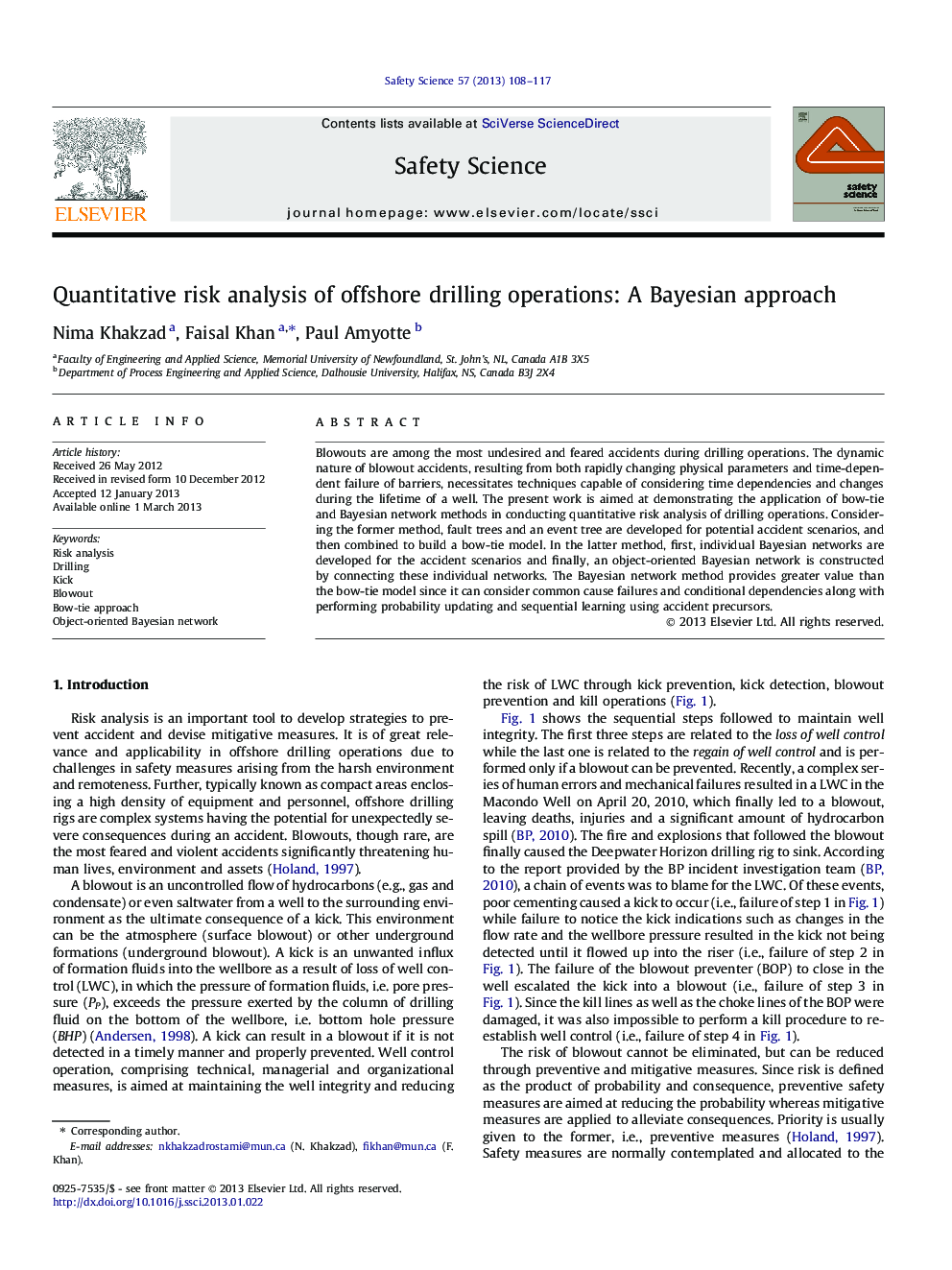| Article ID | Journal | Published Year | Pages | File Type |
|---|---|---|---|---|
| 589542 | Safety Science | 2013 | 10 Pages |
Blowouts are among the most undesired and feared accidents during drilling operations. The dynamic nature of blowout accidents, resulting from both rapidly changing physical parameters and time-dependent failure of barriers, necessitates techniques capable of considering time dependencies and changes during the lifetime of a well. The present work is aimed at demonstrating the application of bow-tie and Bayesian network methods in conducting quantitative risk analysis of drilling operations. Considering the former method, fault trees and an event tree are developed for potential accident scenarios, and then combined to build a bow-tie model. In the latter method, first, individual Bayesian networks are developed for the accident scenarios and finally, an object-oriented Bayesian network is constructed by connecting these individual networks. The Bayesian network method provides greater value than the bow-tie model since it can consider common cause failures and conditional dependencies along with performing probability updating and sequential learning using accident precursors.
► Quantitative risk analysis is conducted for offshore loss of well control. ► Kick, kick detection, and failure of safety barriers are modeled using bow-tie approach. ► Object-oriented Bayesian network (OOBN) is applied to reduce the model complexity. ► Common cause failures and conditional dependencies are modeled using OOBN. ► Accident precursors are used for probability updating via sequential learning.
